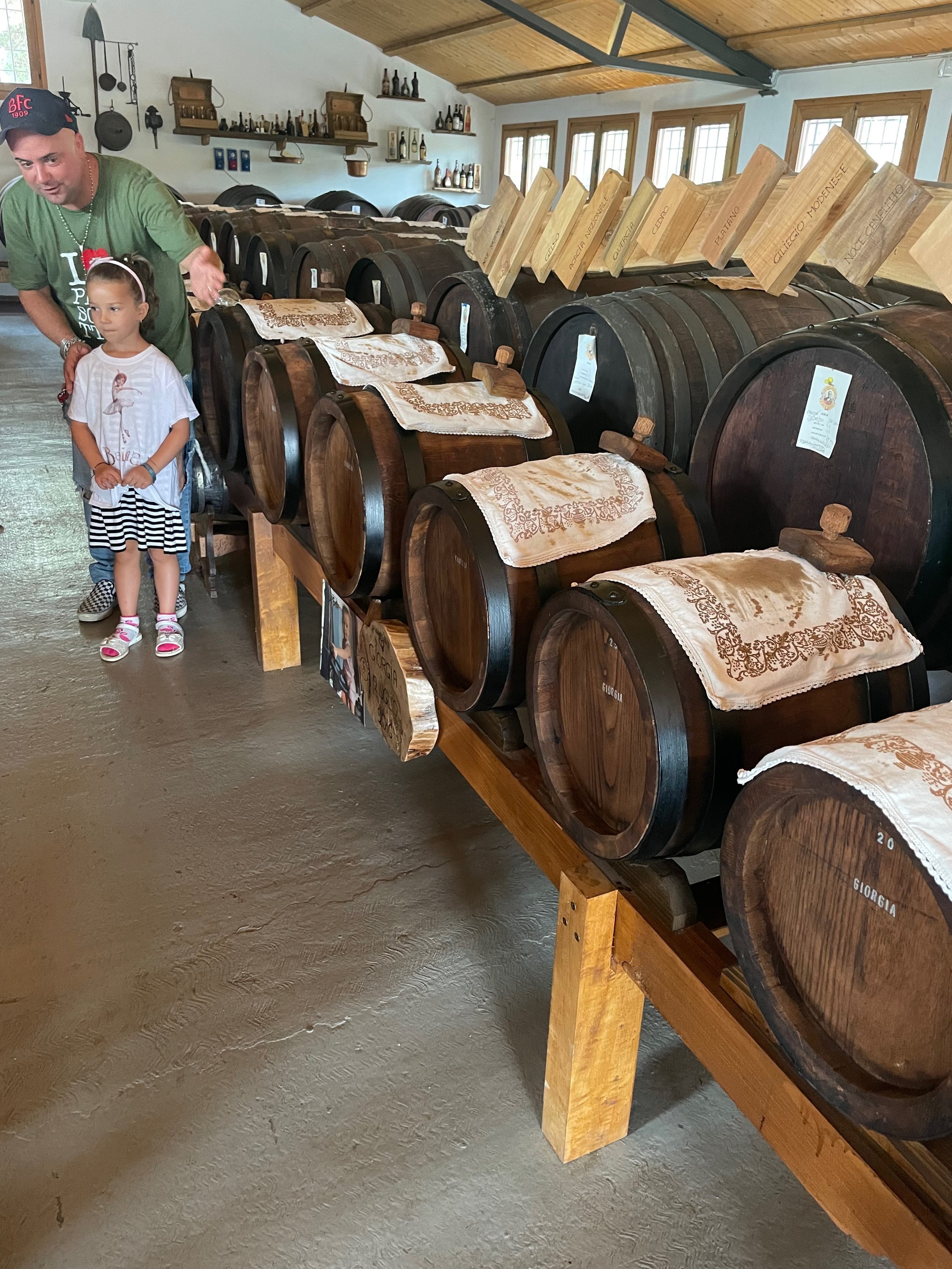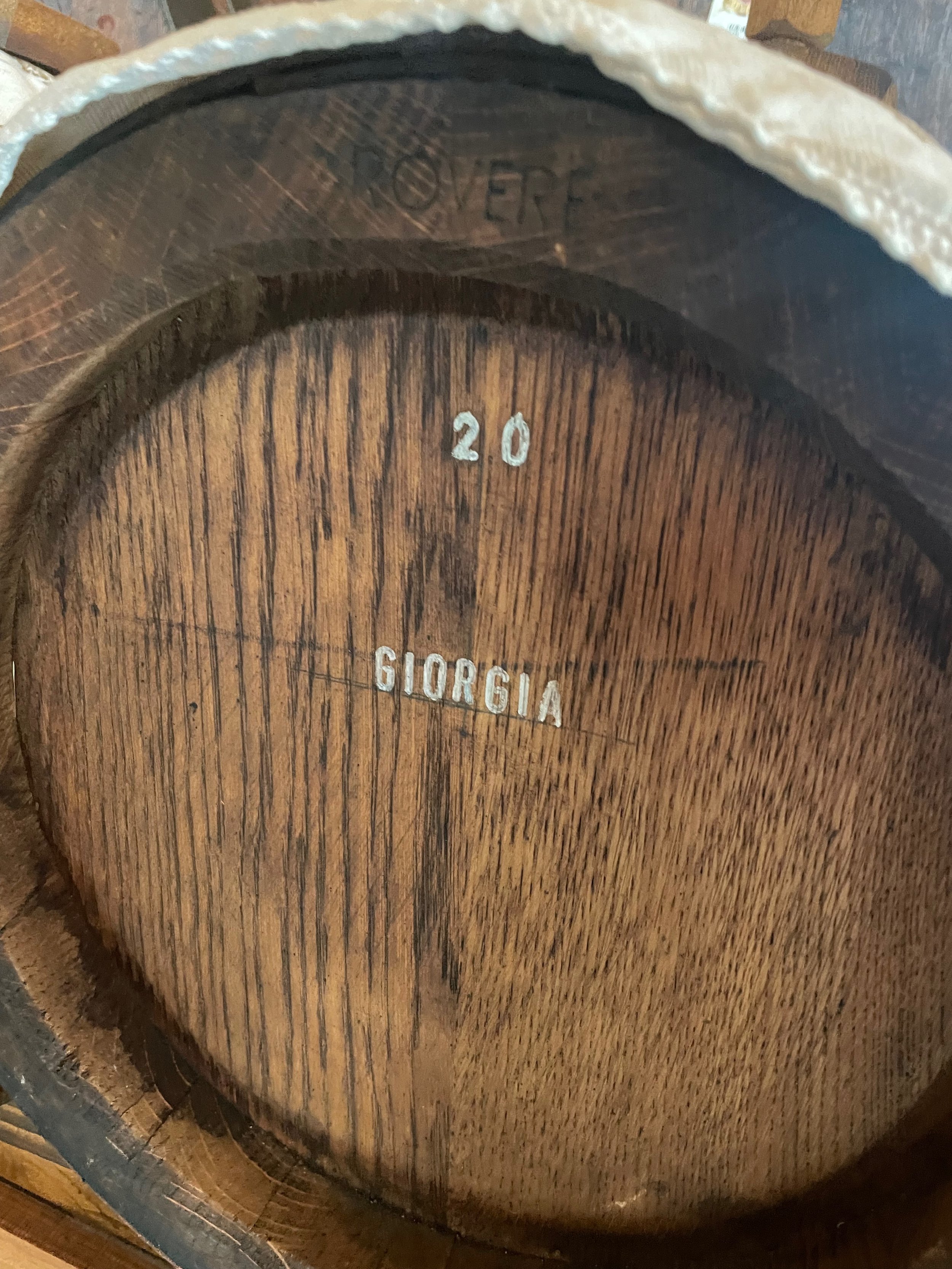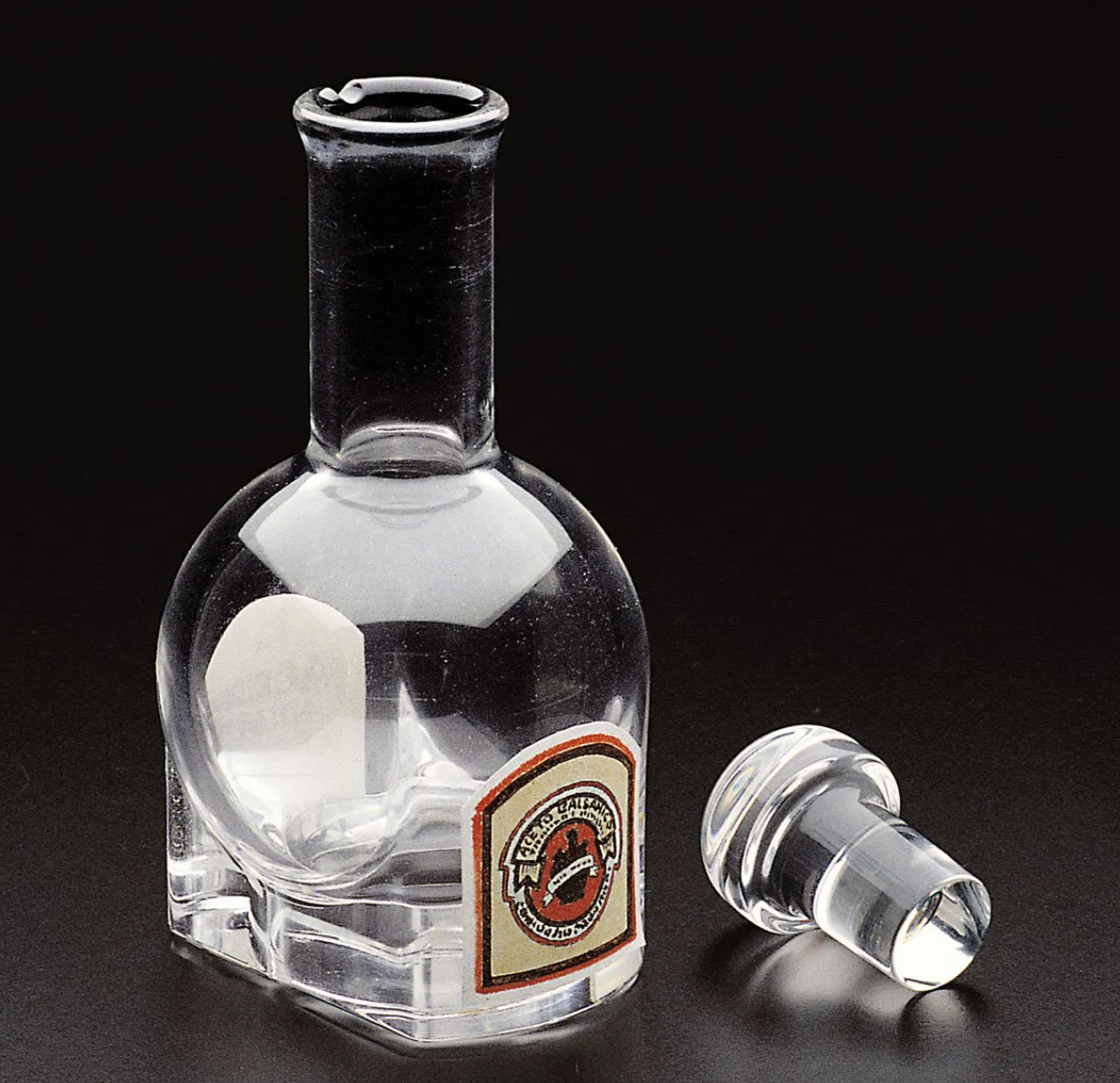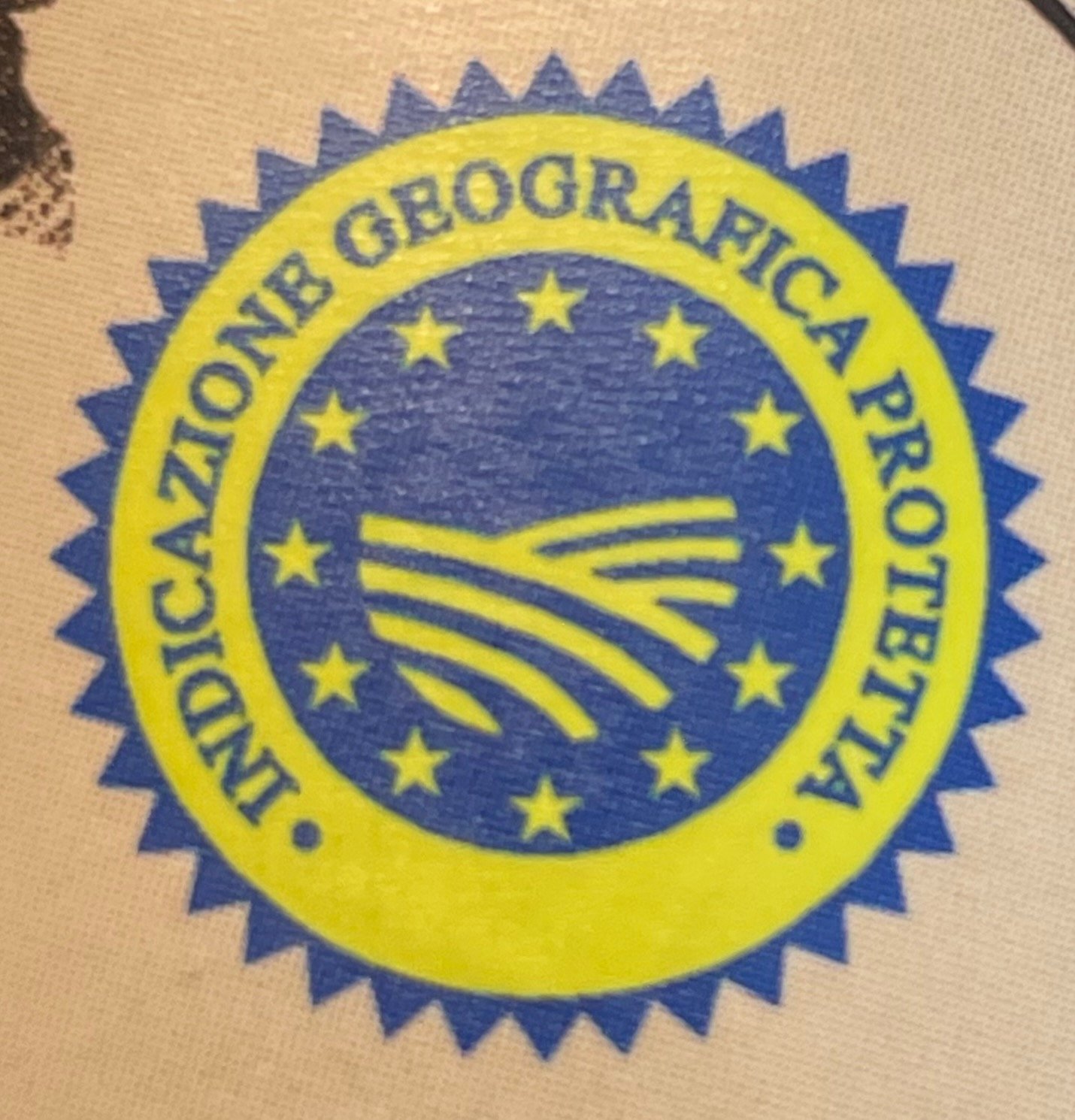Understanding Balsamic Vinegar
Why do some balsamic vinegars cost upwards of $200 an ounce while others cost $9.99 for a liter?
What’s the difference between the different grades and designations and how to identify amongst them?
And more importantly, what should you look for when choosing a good balsamic vinegar at the grocery store?
In my recent travels in the Emilia Romagna region of Italy, I visited Acetaia Cavedoni, a seventh-generation family-run operation - one of the oldest producers of traditional balsamic vinegar of Modena, where I obtained the answers to all the above and more!
Paolo and Marcello Cavedoni, the father and son duo now heading the operation explained to me that in Modena, there is essentially three types of balsamic vinegars:
Traditional Balsamic Vinegar of Modena D.O.P (Denominazione D’Origine Protetta)
Balsamic Vinegar of Modena I.G.P (Indicazione Geografica Protetta)
Balsamic Condiment
So what exactly is “traditional balsamic vinegar D.O.P”?
Traditional Balsamic Vinegar of Modena D.O.P is the highest quality balsamic vinegar one can find and hence why it is commonly referred to as oro nero or black gold. It is produced according to very strict guidelines using age-old methods. The grapes typically used are Lambrusco or Trebbiano and must be grown in the Modena province. The grapes are pressed together with the skins, seeds, and stems to create grape must. The must is cooked until is reduced by half and then left to ferment naturally up to three weeks.
Once the fermentation is complete, the vinegar is transferred to a series of 5-9 aging barrels, each one smaller than the previous one. This set of barrels is called a batteria. It is common to alternate the type of woods (oak and chestnut being the most common) each barrel is made of to give a particular flavor profile to the vinegar. The concept of a batteria is similar to that of the Solera system used to age sherries and ports. The vinegar is left in the batteria to age for at least 12 years. Over time, some of the liquid evaporates through the walls of the barrels and hence, each year, each barrel is topped off with vinegar from the next largest barrel. The largest barrel is topped off with new must from the new harvest. At the end of the 12 years, 10% of the volume of the smallest barrel is removed and bottled. This aging ends up creating a sweeter, thicker and smoother vinegar. The process of topping off each barrel continues beyond the initial 12 years and the following year another 10% is removed and bottled. This continues on pretty indefinitely… I had the opportunity to taste balsamic vinegar of the original batteria of the Cavedoni family which is 162 years old and it truly was an exquisite experience!
One of the oldest batterias at Acetaia Cavedoni
A side note on batterias… Many of the traditional producers setup a batteria when a child in their family is born. In the old days, the batterias were used as dowries when a daughter got married. Nowadays, the families do this to maintain an old tradition and so each child, whether a boy or girl, has their lifetime supply of Traditional Balsamic Vinegar of Modena for the consumption of their own family.
Back to the production process… When the vinegar is bottled starting at the 12th year, it is evaluated by a panel of experts and if it meets all the criteria, it is granted the yellow and red D.O.P stamp and a unique identifier number. The bottle used for traditional balsamic vinegar of Modena DOP has a specific shape that was designed by famed automobile designer, Giorgetto Giugiaro. This bottle holds just 100 ml or 3.4 oz. Traditional Balsamic Vinegars of Modena D.O.P. aged between 12 and 24 years are classified as affinato (fine) and have a red seal. Those aged 25 years or more are classified as extra vecchio (extra old) and have a gold seal.
The production of Traditional Balsamic Vinegar of Modena D.O.P. is a time-consuming process with a very low yield of product – about 10 bottles per batteria each year. Therefore, each bottle can command prices anywhere between 60 and 600 euros in Italy… way more elsewhere!
Making Traditional Balsamic of Modena DOP is a true labor of love not driven by money but by the desire to maintain an age-old tradition alive. For financial viability and a wider reach, producers turn to Balsamic Vinegar of Modena I.G.P.
How is Balsamic Vinegar of Modena I.G.P different from the D.O.P version?
Balsamic Vinegar of Modena I.G.P is what most of us find at food stores. It also has a controlled quality of standard (hence, the I.G.P designation) but it is not as rigorous as that of the Traditional DOP vinegar. The main differences between the two are:
- The grapes do not need to be from the Modena area. As long as the vinegar is produced and packaged in Modena, the grapes can come from anywhere in the world.
- The fermentation process is bypassed – the process goes from cooking the must straight to aging.
- The vinegar is not made solely of cooked grape must. It will usually contain anywhere between 6% and 50% wine vinegar in addition to cooked grape must. Part of the wine vinegar added must be aged at least 10 years.
- The vinegar only needs to be aged for a minimum 60 days. This short aging period is the reason you will never find “aged xx years” on a bottle of balsamic. It really isn’t a selling point to say your balsamic has only be aged for 62 days, for instance! Yet, if it is aged at least three years, the producer is allowed add the word “invecchiato”(aged) to the label.
- It can be packaged in any shaped bottle that holds 250 ml or more.
- The IGP stamp is yellow and blue.
Unlike the DOP vinegars that have such stringent production criteria, the production process of IGP vinegars is more varied and ends up creating a broader spectrum of tastes profiles, quality and prices. Choosing a good I.G.P. starts by looking at the label. When selecting an I.G.P. vinegar, here is what you should look for:
- The vinegar has only cooked grape must and wine vinegar.
- The first ingredient listed on the ingredient list is the cooked grape must. This ensures that it is the primary ingredient. If wine vinegar is listed first, you have an inferior product.
- Although the IGP allows the addition of up to 2% caramel, stay away from vinegars that contain caramel or other ingredients. Caramel is often added to some vinegar to make it sweeter, darker or more viscous, particularly when the first ingredient listed is wine vinegar.
In Italy, you can obtain a good bottle of Balsamic Vinegar of Modena I.G.P. for anywhere between 20 and 40 euros.
As a side note, when I got back home, I looked at the label of the balsamic vinegar I had bought at my local specialty store… The good news… It had the I.G.P. stamp and designation… The bad news… the primary ingredient was wine vinegar AND it had some caramel coloring. I won’t disclose the brand but I will say it is well-known and marketed in many specialty food markets in the United States as a premium product. Obviously, now that I’m more knowledgeable about balsamic, I will be more careful about which balsamic vinegars I buy!
So what if the bottle isn’t marked as being D.O.P. or I.G.P.?
Then you have what is considered balsamic condiment. It doesn’t mean it is a bad balsamic. It just means the production process didn’t follow the criteria set up by the consortiums that grant the respective designations.
Some condiments are excellent - made with the same cooked wine must and aged for a few years. Others are merely wine vinegar with caramel, all in an effort to come across as balsamic. So it’s always important to read the labels and, just like when you are selecting an IGP balsamic, stay away from vinegars made with just wine vinegar or that contain caramel.
One particular balsamic condiment I want to highlight is saba… Saba is considered to be the precursor to balsamic vinegar. It is essentially cooked grape must that has been concentrated, similar to the first step of making balsamic vinegar. But unlike Traditional Balsamic Vinegar of Modena D.O.P., it is not fermented and it is only aged for a few months. And unlike Balsamic Vinegar of Modena I.G.P., it is not mixed with wine vinegar. The end result is a thick, sweet condiment with a slight natural acidity from the grapes. While each family has their own recipe for saba, the Cavedoni’s add quince juice to theirs and it goes incredibly well over fresh ricotta.
Which one should I use and when?
Clearly the Traditional Balsamic Vinegar of Modena D.O.P is a very special product that must be used sparingly… Fortunately, a few drops go along way… I like using it when I want the balsamic to take center stage and when it is not competing with too many other ingredients… A few drops over red raspberries, fresh figs, panna cotta or with cheese will elevate them to a whole new level. It should never be heated as the aromas will be altered.
I use Balsamic vinegar of Modena IGP in pretty much the same way I use Traditional Balsamic Vinegar of Modena, essentially to give a dish a finishing touch - to balance out my sauces, over sauteed or grilled vegetables, on risotto and grilled meats. But because I can use it more generously, I can use it on complex dishes that might require a larger quantity of balsamic.
If I’m making salad dressing or a marinade or actually cooking with the balsamic, I’ll stick to balsamic condiment.
Regardless of the grade, I store all my balsamic vinegars in a cool, dark place away from other ingredients with strong aromas. If you follow these simple steps, your balsamic will last indefinitely or until you consume it all!
If you enjoy balsamic vinegars and ever find yourself in the Emilia-Romagna region, I highly encourage you to visit Acetaia Cavedoni. I first visited them as part of a larger food tour. But I loved this part of the tour so much that I came back three days later and brought some friends along. Paolo and Marcello were incredible knowledgeable and hospitable. Beyond the tour of the acetaia and the tasting of the vinegars, we enjoyed an afternoon eating the cheeses and salumi the area is well known for and felt like were visiting old friends and enjoying in the passion of their craft.














